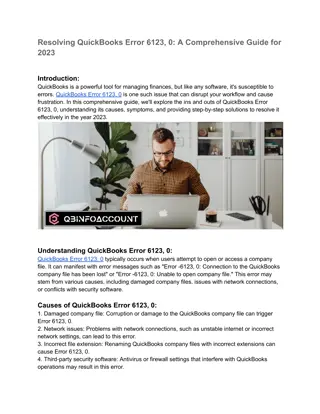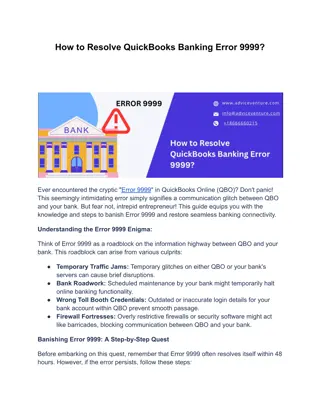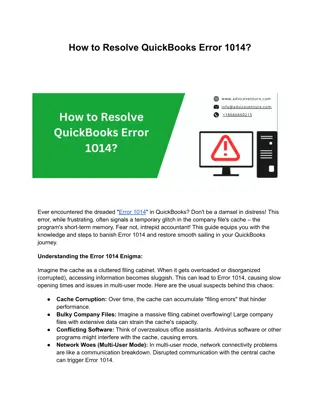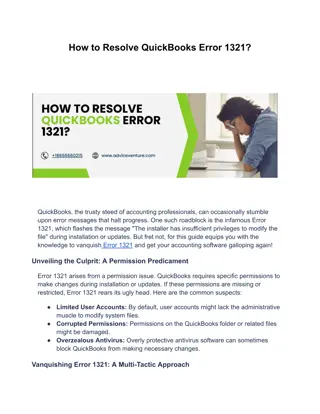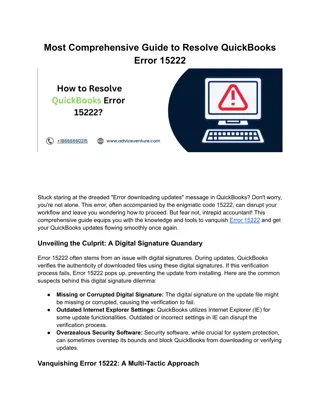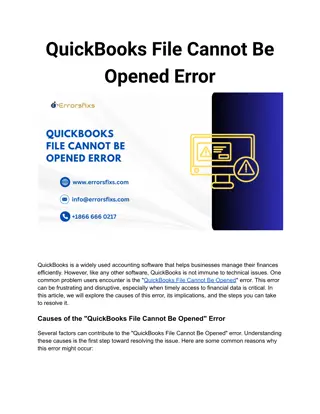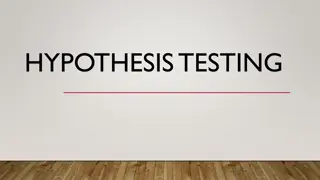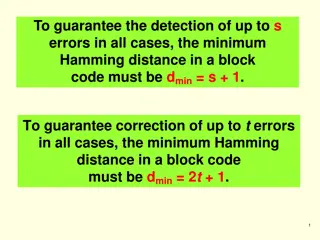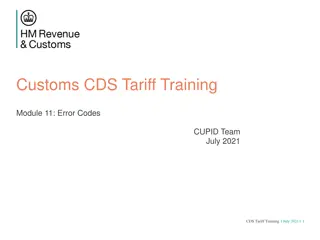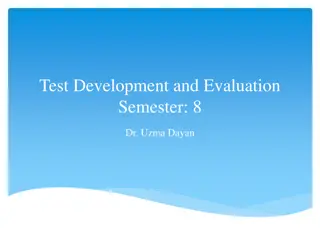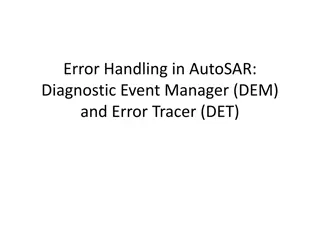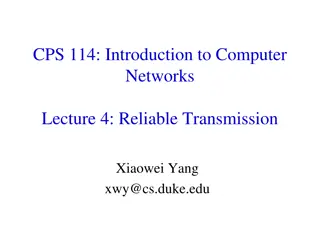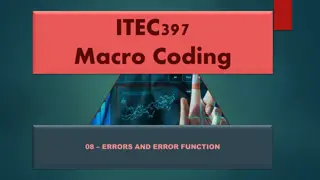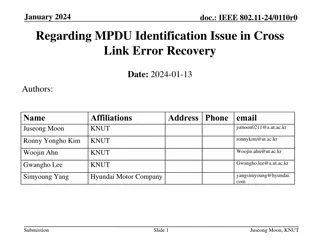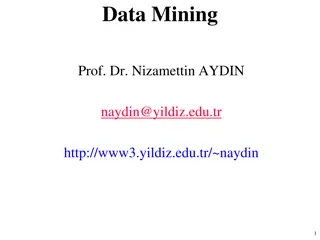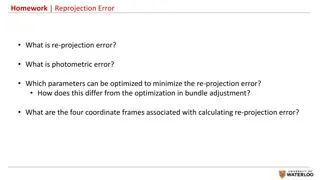Understanding Error Detection and Checksum Methods
Data transmission can lead to errors, with single-bit errors and burst errors being common. Error detection methods such as checksum play a vital role in ensuring data integrity. Learn about checksum, one's complement arithmetic, and examples illustrating error detection techniques.
Download Presentation

Please find below an Image/Link to download the presentation.
The content on the website is provided AS IS for your information and personal use only. It may not be sold, licensed, or shared on other websites without obtaining consent from the author. Download presentation by click this link. If you encounter any issues during the download, it is possible that the publisher has removed the file from their server.
E N D
Presentation Transcript
Error Detection Data can be corrupted during transmission. Some applications require that errors be detected and corrected. In a single-bit error, only 1 bit in the data unit has changed. 1
A burst error means that 2 or more bits in the data unit have changed. Figure 2: Burst error of length 8
CHECKSUM The error detection method we discuss here is called the checksum. The checksum is used in the Internet by several protocols although not at the data link layer. However, we briefly discuss it here to complete our discussion on error checking Topics discussed in this section: Idea One s Complement Internet Checksum
Example 1: Suppose our data is a list of five 4-bit numbers that we want to send to a destination. In addition to sending these numbers, we send the sum of the numbers. For example, if the set of numbers is (7, 11, 12, 0, 6), we send (7, 11, 12, 0, 6, 36), where 36 is the sum of the original numbers. The receiver adds the five numbers and compares the result with the sum. If the two are the same, the receiver assumes no error, accepts the five numbers, and discards the sum. Otherwise, there is an error somewhere and the data are not accepted.
Example 2: We can make the job of the receiver easier if we send the negative (complement) of the sum, called the checksum. In this case, we send (7, 11, 12, 0, 6, 36). The receiver can add all the numbers received (including the checksum). If the result is 0, it assumes no error; otherwise, there is an error.
Example 3: How can we represent the number 21 in one s complement arithmetic using only four bits? Solution The number 21 in binary is 10101 (it needs five bits). We can wrap the leftmost bit and add it to the four rightmost bits. We have (0101 + 1) = 0110 or 6.
Example 4: How can we represent the number 6 in one s complement arithmetic using only four bits? Solution In one s complement arithmetic, the negative or complement of a number is found by inverting all bits. Positive 6 is 0110; negative 6 is 1001. If we consider only unsigned numbers, this is 9. In other words, the complement of 6 is 9. Another way to find the complement of a number in one s complement arithmetic is to subtract the number from 2n 1 (16 1 in this case).
Example 5: Let us redo example 2 using one s complement arithmetic. Figure 3 shows the process at the sender and at the receiver. The sender initializes the checksum to 0 and adds all data items and the checksum (the checksum is considered as one data item and is shown in color). The result is 36. However, 36 cannot be expressed in 4 bits. The extra two bits are wrapped and added with the sum to create the wrapped sum value 6. In the figure, we have shown the details in binary. The sum is then complemented, resulting in the checksum value 9 (15 6 = 9). The sender now sends six data items to the receiver including the checksum 9.
Example 5: (continued) The receiver follows the same procedure as the sender. It adds all data items (including the checksum); the result is 45. The sum is wrapped and becomes 15. The wrapped sum is complemented and becomes 0. Since the value of the checksum is 0, this means that the data is not corrupted. The receiver drops the checksum and keeps the other data items. If the checksum is not zero, the entire packet is dropped.
Note Sender site: 1. The message is divided into 16-bit words. 2. The value of the checksum word is set to 0. 3. All words including the checksum are added using one s complement addition. 4. The sum is complemented and becomes the checksum. 5. The checksum is sent with the data.
Note Receiver site: 1. The message (including checksum) is divided into 16-bit words. 2. All words are added using one s complement addition. 3. The sum is complemented and becomes the new checksum. 4. If the value of checksum is 0, the message is accepted; otherwise, it is rejected.


